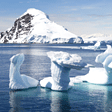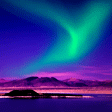- Home >
- Our Actions >
- Ambassador report
3
Comments
Greenhouse Effect on Earth |
|---|
|
by Dharmendra Kapri | 22-04-2014 04:55
|
|
If the earth had no atmosphere, its average surface temperature would be about -18 *C, the same as that of the moon, which lacks atmosphere. Actually, the average temperature of the earth's surface is about 15*C. The reason why the earth is warmer than the moon is that it has an atmosphere. The atmosphere absorbs much of the incoming radiation from the sun and reradiates to the earth's surface, but prevents the earth's heat to escape into the space. Thus, the atmosphere acts as a greenhouse, trapping the heat. Man can survive on earth only because of this greenhouse effect. The natural gases in the atmosphere most responsible for keeping the earth's surface warm are CO2 and water vapour.
Man is adding large amounts of CO2 to the atmosphere each year by burning fossil fuels. This may produce greenhouse effect and may make the earth warmer and change climates. Rise in temperature may melt the polar and alpine snow, and this may raise the sea level and submerge the coastal areas. Rise in temperature would have some others effects also. Climate zones and ocean currents would shift, agriculture would be displaced, and the world's major vegetation zones would alter. Another dramatic effect might be thermal expansion of the oceans, causing further rise in sea level. Reforestation can check these eventualities. Industries are also increasing the particulate matter in the air. The particulate matter decreases the amount of sunlight reaching the earth. The particles reflect light back into the space. This process decreases the earth's temperature. A slight fall in the earth's temperature would bring in another ice age. It seems unlikely that the effects of CO2 and particulate matter would balance. Hence, some change in the world climate may be expected. Clouds and dust particles can also produce "Greenhouse Effect". This is why cloudy, dusty and humid nights are warmer than the clear, dustfree, dry nights.
|
|
|










 Previous : Gold mines
Previous : Gold mines









3 Comments
It's really great to see our Ambassadors exchanging their opinions. Thanks for the article, Dharmendra and for the comments Konstantinos and Pratap!
Posted 29-04-2014 14:56
very nice article indeed but coming to Konstantinos's point about cultivating in siberia, are we sure that the areas which are covered by snow and ice will be cultivable and fertile enough to produce enough food for growing population?
just a query!!
Posted 25-04-2014 13:06
Very nice article. However, if the Earth temperature went cooler, Africa, which is a huge and little populated area could be viable for cultivation, and more people could move to it. Meanwhile, if the Earth temperature went warmer, then we could use the immense plain of Siberia for cultivation.
I agree with you that displacing cultivation is a problem, but it would probably end up to be something good.
Posted 23-04-2014 02:45